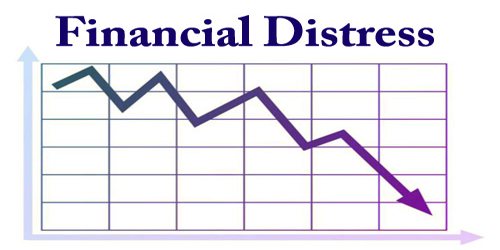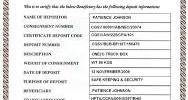Financial Distress is a situation when a company is struggling to generate enough profits to meet its financial obligations. There could be various reasons for such a situation. However, some of the most common ones are illiquid assets, high fixed costs, and unfavorable macro trends, and so on.
It is a term in corporate finance used to indicate a condition when promises to creditors of a company are broken or honored with difficulty. If financial distress cannot be relieved, it can lead to bankruptcy. Financial distress is usually associated with some costs to the company; these are known as costs of financial distress.
If a company or individual experiences a period of time when it cannot pay its bills and other obligations by their due date, it is likely experiencing financial distress. Some of these expenses may include (expensive) financing, opportunity costs of projects, and employees who aren’t productive. Employees of a distressed firm usually have lower morale and higher stress caused by the increased chance of bankruptcy, which could force them out of their jobs.
Companies under financial distress may find it difficult to secure financing. They may also find their market value dropping significantly, customers cutting back orders, and suppliers changing their terms of delivery.
Looking at a company’s financial statement can help investors and others determine its financial health. For example, negative cash flow under the cash flow statements is one indicator of financial distress. This could be caused by a big difference between cash payments and receivables, high-interest payments, and a drop in working capital.
Individuals who experience financial distress may find themselves in a situation where their debts are much more than their monthly income. This includes home or rent payments, car payments, and credit card and utility bills. People who experience situations like these tend to go through it for an extended period of time.
Some of the signs of a company facing financial distress are unable to pay creditors and third parties, facing challenges to pay monthly bills and salaries. When a company is in such a situation, it not only affects the higher management. The employees might also suffer from lower morale and higher stress due to the company not being able to meet its obligations.
Companies usually ensure that they do not ignore the signs of financial distress as it could take a severe turn in the long-run. Every management aims to reverse any sort of financial distress and keep the organization immune from a knee-jerk reaction.
Close coordination of the management, credit managers, and other stakeholders is something that the organizations should ensure to avoid such situations. Also, making sure that there is enough cash available in the organization to meet the daily expenses helps management to wither such situations. Some companies also hire advisors to streamline expenses to ensure there is enough cash in the system.
Cost of Financial distress –
A common example of a cost of financial distress are bankruptcy costs. These direct costs include auditors’ fees, legal fees, management fees, and other payments. The cost of financial distress can occur even if bankruptcy is avoided (indirect costs).
Financial distress in companies requires management attention and might lead to reduced attention on the operations of the company.
Another source of indirect costs of financial distress are higher costs of capital as usually banks increase the interest rates if a state of financial distress occurs.
Reasons for Financial distress –
Several reasons can put an organization in financial distress. These are:
- Cumulative Losses – Losses on multiple fronts and also continuous losses are one major factor responsible for the company going into financial distress. Often, it is seen that companies in one particular industry are more prone to financial distress during a given time. This could be due to the industry facing a downturn because of new legislation, the industry being very capital expensive, sluggish cash flow, higher capital expense and so on.
- Cash Flows – Cash flow is the speed at which the money comes, as well as, leaves the business. A company might be making a profit, but the majority of its profits may be accrued. In this case, the company might not have cash at hand to run the day to day operations. But, it still needs to pay the monthly expenses or fixed costs. Thus, if a company does not manage its credit cycle properly, the gap between the cash inflow and outflow (paying expenses) can increase, thereby leaving the company cash dry.
- Macro Trends and Regulator Headwinds – Any change in tax policies, custom duties, or new legislation may affect a company’s cash flow and available cash. This could lead to a higher outflow of cash to meet the daily obligations, resulting in little profit in hand. Similarly, there are instances, where companies are into a legal battle with another company and are ordered to pay massive compensation or penalty.
- High Expenses and Low Sales – It is understandable that if a company is low on sales and is unable to cut down on its expenses, it would lead to a cash crunch. Sales can drop due to various reasons such as cyclical factors, seasonal demands, a weak economy, and so on. However, most of the companies cannot cut down on their fixed and operational costs. This creates a situation of high expense and low sales. Companies could start cutting down aggressively on marketing and product branding if such a situation arises. In some severe cases, they might even start laying off employees, in order, to save the cost and avoid the situation of financial distress.
- Debt Management – Credit management is a crucial part of a company to ensure the availability of cash. Often companies fall into a debt trap if they are not making enough money to settle obligations, including debt and interest on the debt. Failing to settle debt payments leads to bad credit rating for the company. And, this could further escalate the crisis as it gets difficult to get more debt. Delayed payment increases the interest burden. Mismanagement of debt might seem like a small issue initially but could end up drying the entire cash surplus of a company.
- Insufficient Accounting Practices – Often it is seen that businesses with no proper accounting face situations of financial distress. Proper record-keeping could help a business identify trends and irregularities. And, this allows the management to take steps early to address irregularities and avoid financial distress. Additionally, a company should also make budgets regularly. This helps the company to plan in a better way and have control over every aspect of the business.
If a high debt burden is the cause of financial distress, the company can undergo a debt restructuring. If operational issues are the reason for the distress, the company can negotiate a payment holiday with its creditors and improve operations to be able to service its debt.
Information Sources:
















